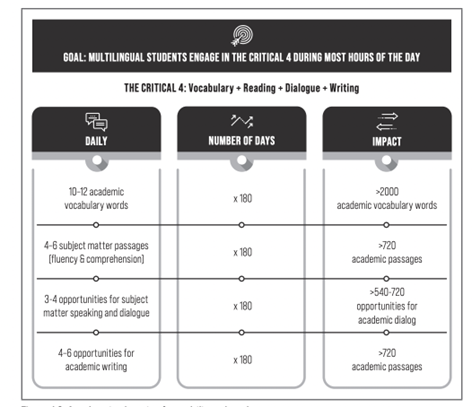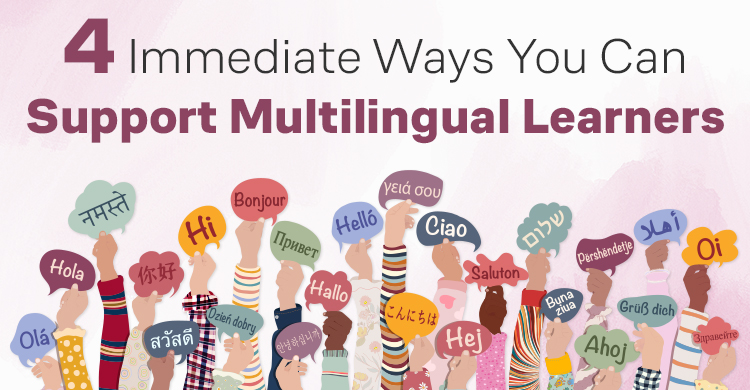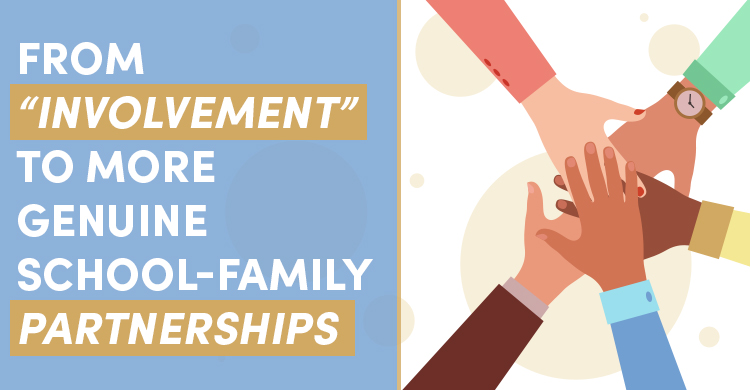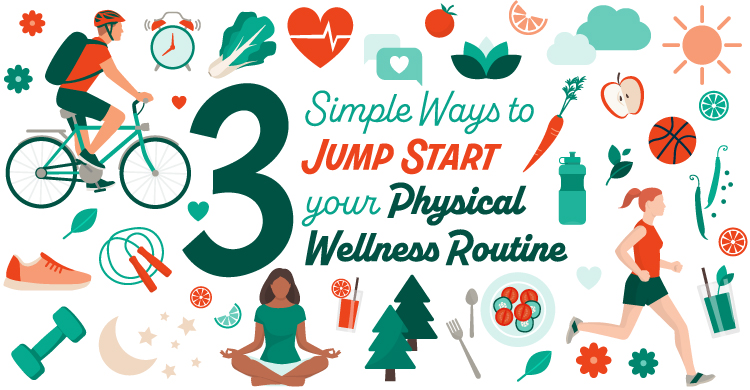Learn to love the superiority of And over Or
There are more than 5 million multilingual (ML) students in K–12 schools today, which represents approximately 10% of the total preK–12 student population (49.4 million)1. If spread evenly, most teachers in most schools would have 3–5 students in their classroom. I repeatedly hear teachers asking, “How can we support multilingual learners in the classroom without lowering the rigor of the lesson?” The good news is we are not looking at an either/or situation; rather, it can become a yes/and situation.
Teachers need not choose between rigorous lessons and sacrificing instructional time for the whole class to support ML students. Yes, we can keep the rigor for all, and we can utilize strategies that can be targeted to the specific needs of the ML student in the general education classroom.
Intentional and consistent use of vocabulary instruction, close reading, opportunities for dialog, and writing are practices that benefit students at all skill levels and, with additional planning, can be targeted to continual language development opportunities for ML students.
4 reliable practices that elevate learning for all
The instructional strategies that support multilingual learners are strategies that increase rigor and academic gains for all students. Teachers do not have to choose between serving multilingual learners and providing rigorous instruction for all. Classrooms where ML students thrive, offer consistent opportunities throughout the day for students to experience scaffolded and supported language practice.
- Vocabulary (2–5 words in preparation for a close read)
- Close Read (carefully selected academic reading passage utilizing the close reading strategy)
- Dialog (students have the opportunity to participate in a structured and intentional dialog about the reading using the vocabulary words in preparation for writing)
- Writing (students write sentences or paragraphs summarizing the reading using vocabulary words)
These four practices may require a different approach to instruction and classroom structures. The lesson should engage students in peer work as they practice vocabulary, provide feedback during close reading and dialog, and prepare for writing. For instance, a 20-minute section of the lesson could include 2–4 minutes of vocabulary practice, 7–12 minutes with partners for close reading and dialog, and 3–4 minutes for a few summary sentences—or, when the passage is longer, students could participate in cooperative learning as part of the dialog process, concluding with a longer written response.
Why dedicated instructional coaching is important to teaching
This is where instructional coaching comes into play. Every teacher can benefit from working with an instructional coach to sit shoulder to shoulder and co-plan lessons, model teaching, problem solve, brainstorm, and truly collaborate.
Partnering with an instructional coach can dramatically accelerate intentional changes in practice that create a productive learning environment for ML students. Schools that implement intentional professional learning that includes instructional coaching for each teacher enjoy rapid changes in the instructional experience for all students and often see measurable and observable student learning gains within the first school year of implementation.
The instructional changes focus on 4 critical practices repeated throughout the day. These practices benefit all students and, when individualized to the academic needs of each ML student, accelerate student learning.
Why critical ML engagement practices need to be constant
Imagine a school day where an English learner had the opportunity to dialogue, learn two or three new words, deeply comprehend a passage, and practice fluency most hours. In addition to any pull-out or push-in intervention, the exponential impact of multiple lessons across the day engaging students in these strategies would yield:
- 4 to 6 chances to practice fluency and comprehension of passages
- Several minutes every hour for academic dialog practice
- Intentional instruction on 10 to 12 vocabulary words
- 4 to 6 chances to produce academic writing passages relevant to the subject matter
When every teacher becomes proficient in these strategies, teacher collective efficacy and teacher efficacy can be impacted. When these instructional strategies are intentionally built in across the day, ML students have the opportunity to practice English and build vocabulary.

When these instructional habits are cemented in every classroom across the school, by the end of the school year, each student will have practiced fluency and comprehension on more than 700 passages, engaged in 250–400 hours of academic dialogue, and learned 2,000 vocabulary words. You can see how this intentional approach closes learning gaps by expanding the opportunities for students to engage in these pivotal academic components.
- Raise the bar: Pathways to multilingualism. | U.S. Department of Education. (n.d.). https://www.ed.gov/raisethebar/multilingualism-pathways
- Brock, J. K., & Calderón, M. (2024). Coaching for multilingual student success: Intentional practices to accelerate learning and close achievement gaps. Solution Tree Press.
For more information about supporting English and multilingual learners, explore these hand-picked resources and events:
- Got ELs? You will! R U Ready? (Blog)
- Making Cultural Responsiveness a Meaningful Aspect of Your Mission (Webinar)
- Providing Soluciones: A Multitiered Approach to Advance Learning for Latino/a Students (Special Event Coming to Iowa this April!)








